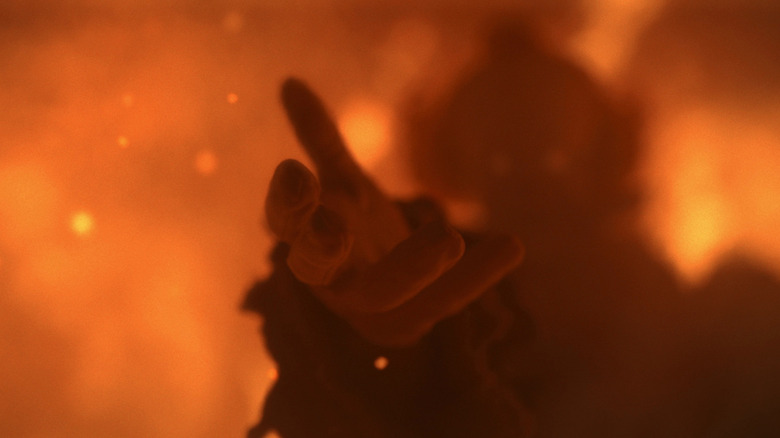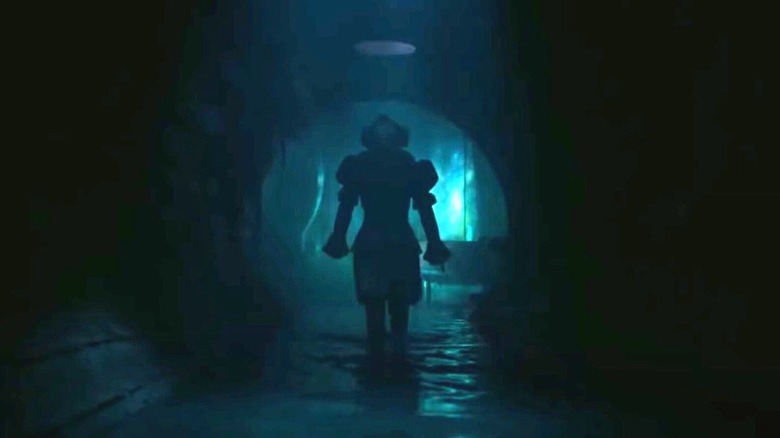It: Welcome To Derry's Terrifying Lamp Scare Was Inspired By Gruesome Real-World History
This article contains spoilers for "It: Welcome to Derry," episode 1.
"It: Welcome to Derry" sends Pennywise the Clown (Bill Skarsgard) to the 1960s, and no one is safe from his wicked exploits. The first episode is pure nightmare fuel and doesn't hold back when it comes to the horror, which brings us to a rather disturbing scene involving a kid named Teddy (Mikkal Karim-Fidler) being terrorized by a lamp with a tortured human face on it. The scene in question is one of the episode's many chilling set-pieces that emphasize Pennywise's otherworldly abilities, but it was also inspired by real-life horror stories pertaining to Nazi atrocities during World War II.
Stephen King adaptations and their offshoots dabble in horror of the supernatural variety, but the "It" saga is arguably more disturbing when it sheds a light on human evils — homophobia and racism in particular. "Welcome to Derry" continues this trend in an episode 1 scene in which Teddy's dad tells his son about the Nazis using the skin of Jewish prisoners to create lampshades, a tale lifted straight out of the pages of history (more on that later). The story strikes a chord with the child, and he is subsequently horrified by a visual reminder of it when he's tormented by the lamp later on.
Given that Teddy and his family are also Jewish, the lamp scene in "Welcome to Derry" packs a powerful punch due to its real-world connotations. The sequence is a reminder of the Holocaust, and that's why it's more chilling than the show's other nightmarish moments.
It: Welcome to Derry reminds viewers of Nazi atrocities
In the "It: Welcome to Derry" scene where Teddy's dad informs him of the Nazi horrors in World War II, he brings up Buchenwald, the concentration camp most synonymous with SS officers using human skin to make soap, lampshades, ornaments, and other everyday appliances. Some of these items are kept at the Buchenwald Memorial museum to this day, but they aren't on display for obvious reasons.
According to various reports, Hans Muller, a doctor at Buchenwald, was a major driving force behind the SS using the remains of deceased Jewish prisoners to create gifts for the concentration camp's officers. To bring these objects to life, the Nazis reportedly focused on using prisoners with tattooed skin since they viewed them as uneducated and insignificant, meaning they especially didn't think twice about killing them.
"It: Welcome to Derry" is a gruesome show, and the lampshade sequence will likely prove to be one of the most controversial moments in season 1 — which is really saying something, given that children are Pennywise's main target. The scene highlights the real-life horrors that befell innocent people during one of the darkest periods in human history, reminding viewers that human beings are more monstrous than fictional clowns.
"It: Welcome to Derry" airs on HBO and HBO Max on Sunday nights.

